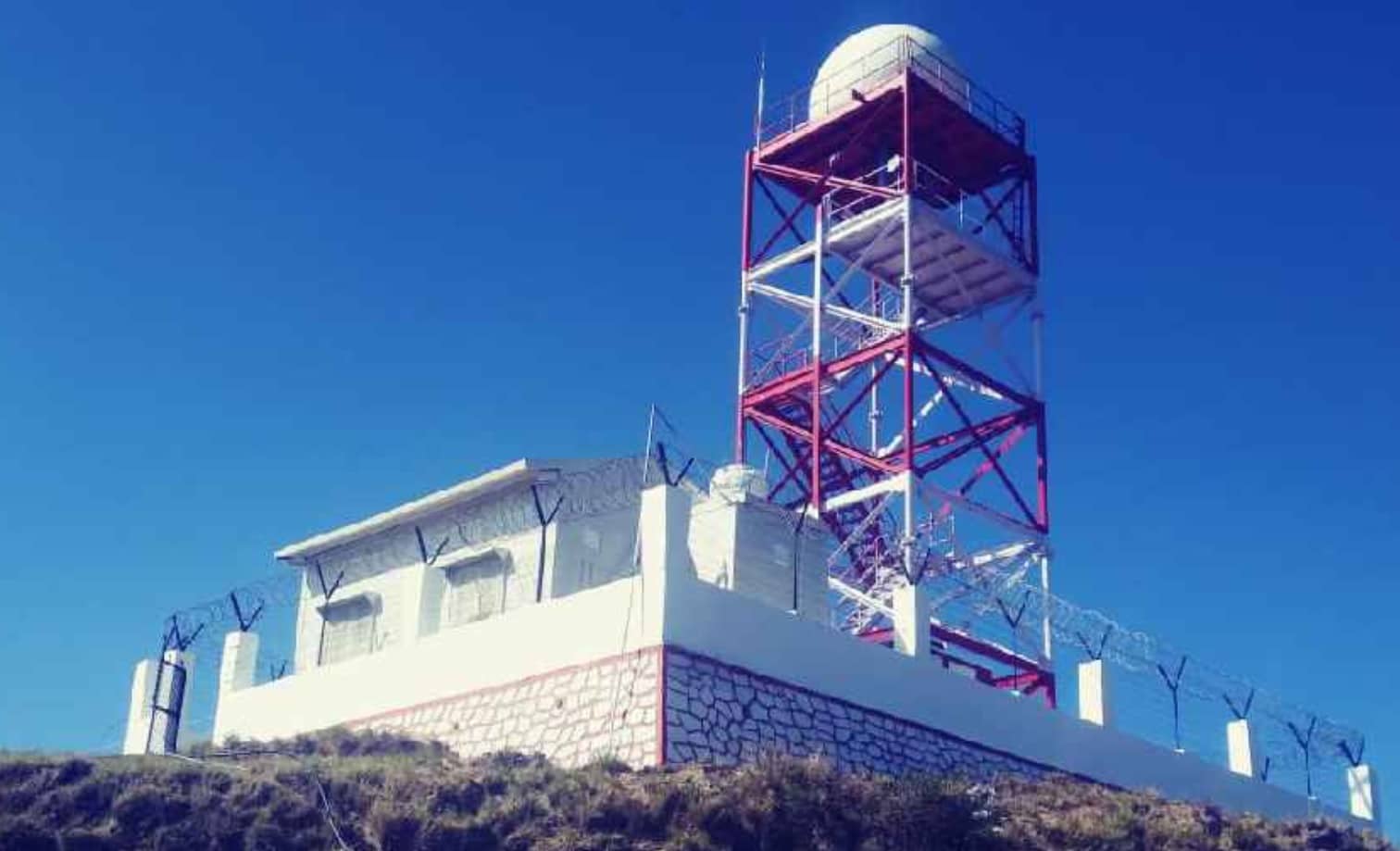What’s in today’s article?
- Why in news?
- What is a weather radar?
- How does a weather radar work?
- What are the types of weather radar bands?
- What is India Meteorological Department (IMD)?
- What is the Mandate of IMD?
- News Summary: India to have Doppler Weather Radar Network by 2025
Why in news?
- Union Minister of State for Earth Sciences has said that the entire country will be covered by Doppler Weather Radar Network by 2025 to predict extreme weather events more accurately.
- He made this announcement while delivering the keynote address on the occasion of 148th Foundation Day of India Meteorological Department (IMD).
What is a weather radar?
- Weather radar is also known as Doppler weather radar.
- It is different from normal radar as it uses the Doppler Effect principle to provide information about weather forecast.
- Doppler Effect refers to the change in wave frequency during the relative motion between a wave source and its observer.
- Doppler radar systems provide accurate information regarding the movement of targets as well as their position.
- It is different from normal radar as it uses the Doppler Effect principle to provide information about weather forecast.
- It is an instrument that sends pulses of electromagnetic energy into the atmosphere to find precipitation, determine its motion and intensity, and identify the precipitation type such as rain, snow or hail.
- When the electromagnetic pulse strikes an object such as a raindrop or a snowflake, the wave reflects back to the radar with data that can be analysed by meteorologists.
How does a weather radar work?
Image Caption: Working of Weather Radar
- Weather radar utilizes either a solid-state or tube transmitter to send energy pulses (also known as radar beams) into the air to detect precipitation.
- This focused beam radiates outward from an antenna (also known as a radar dish).
- If the radar beam bounces off precipitation such as rain or hail, the beam will return to the weather disk, where the data is processed into various parameters.
- This enables a meteorologist to analyse and interpret the type of weather occurring dozens of miles away from the radar.
What are the types of weather radar bands?
- S-Band radars
- Wavelength: 8 – 15 cm
- Frequency: 2 – 4 GHz
- Use cases:
- This radar’s longer wavelength allows the beam to penetrate through several bands of precipitation, expanding the range for analysis.
- These radars help the meteorologist generate weather alerts further in advance.
- C-Band radars
- Wavelength: 4 – 8 cm
- Frequency: 4 – 8 GHz
- Use cases:
- C-Band radars are often intended for short-range weather observation but can be used in medium- to long-range precipitation analysis.
- X-Band radars
- Wavelength: 2.5 – 4 cm
- Frequency: 8 – 12 GHz
- Use cases
- Because of the smaller wavelength, the X band radar is more sensitive and can detect smaller particles.
- Hence, these radars are used for studies on cloud development.
- Most major airplanes are equipped with an X band radar to pick up turbulence and other weather phenomena.
What is India Meteorological Department (IMD)?
- Formed in 1875, the IMD is a principal agency responsible for meteorological observations, weather forecasting and seismology.
- It works under the Ministry of Earth Sciences, Govt of India.
- Headquartered at Delhi, IMD operates hundreds of observation stations across India and Antarctica.
- IMD became a member of the World Meteorological Organisation in April 1949.
What is the Mandate of IMD?
- To take meteorological observations and to provide current and forecast meteorological information for optimum operation of weather-sensitive activities like agriculture, irrigation, shipping, aviation, offshore oil explorations, etc.
- To warn against severe weather phenomena like tropical cyclones, heavy rains and snow, cold and heat waves, etc.
- To provide meteorological statistics required for agriculture, water resource management, industries, oil exploration and other nation-building activities.
News Summary: India to have Doppler Weather Radar Network by 2025
- IMD has announced to cover the entire country under sophisticated radar network by deploying 25 additional Doppler Weather Radars (DWRs).
- The IMD also decided to increase its agro-meteorological service facilities from 3,100 blocks in 2023 to 7,000 blocks in 2025.
- It also announced to bring Delhi, Kolkata and Guwahati under its urban flood warning system in coming years.
- The urban flood warning system, introduced in Mumbai in July 2020, is currently operational in two cities including Chennai.
What is the Significance of this move?
- Among all extreme weather events in India in 2022, thunderstorms and lightning claimed the highest 1,285 lives (58% of total casualties of 2,227) followed by floods and heavy rains (835).
- Besides protecting lives, warning and advisory services will help farmers and fishermen to improve their income.
Q1) What is Doppler Effect?
Doppler Effect refers to the change in wave frequency during the relative motion between a wave source and its observer.
Q2) What is a radar?
RADAR stands for ‘Radio Detection And Ranging’. It is an active transmission and reception method in the microwave GHz range. Radar sensors are used for contactless detection, tracking, and positioning of one or more objects by means of electromagnetic waves.
Source: Entire India to be covered under Doppler Weather Radar network for better forecast by 2025 | All India Radio | IMD | IBM | Business Standard
Last updated on July, 2025
→ UPSC Notification 2025 was released on 22nd January 2025.
→ UPSC Prelims Result 2025 is out now for the CSE held on 25 May 2025.
→ UPSC Prelims Question Paper 2025 and Unofficial Prelims Answer Key 2025 are available now.
→ UPSC Calendar 2026 is released on 15th May, 2025.
→ The UPSC Vacancy 2025 were released 1129, out of which 979 were for UPSC CSE and remaining 150 are for UPSC IFoS.
→ UPSC Mains 2025 will be conducted on 22nd August 2025.
→ UPSC Prelims 2026 will be conducted on 24th May, 2026 & UPSC Mains 2026 will be conducted on 21st August 2026.
→ The UPSC Selection Process is of 3 stages-Prelims, Mains and Interview.
→ UPSC Result 2024 is released with latest UPSC Marksheet 2024. Check Now!
→ UPSC Toppers List 2024 is released now. Shakti Dubey is UPSC AIR 1 2024 Topper.
→ Also check Best IAS Coaching in Delhi














